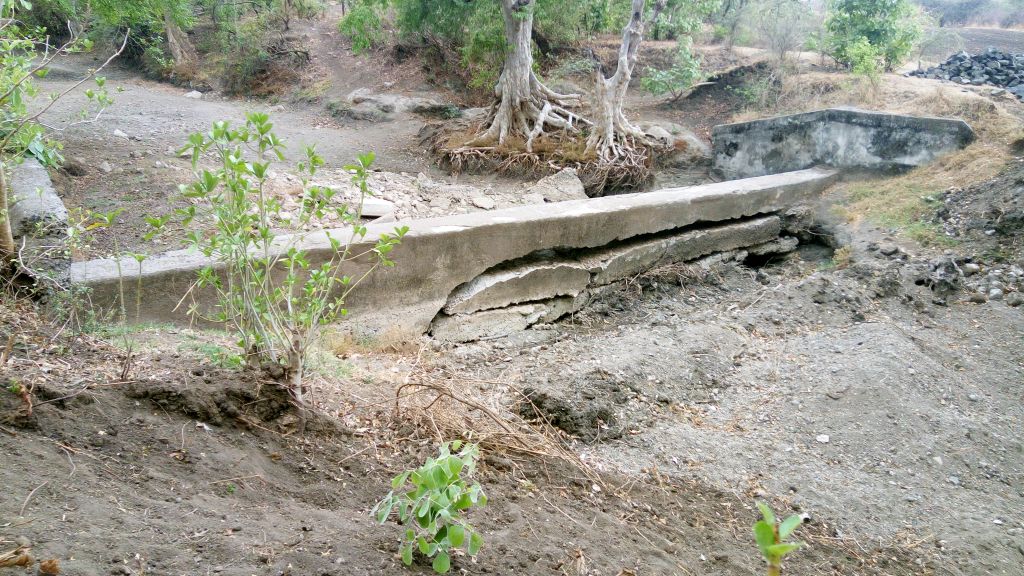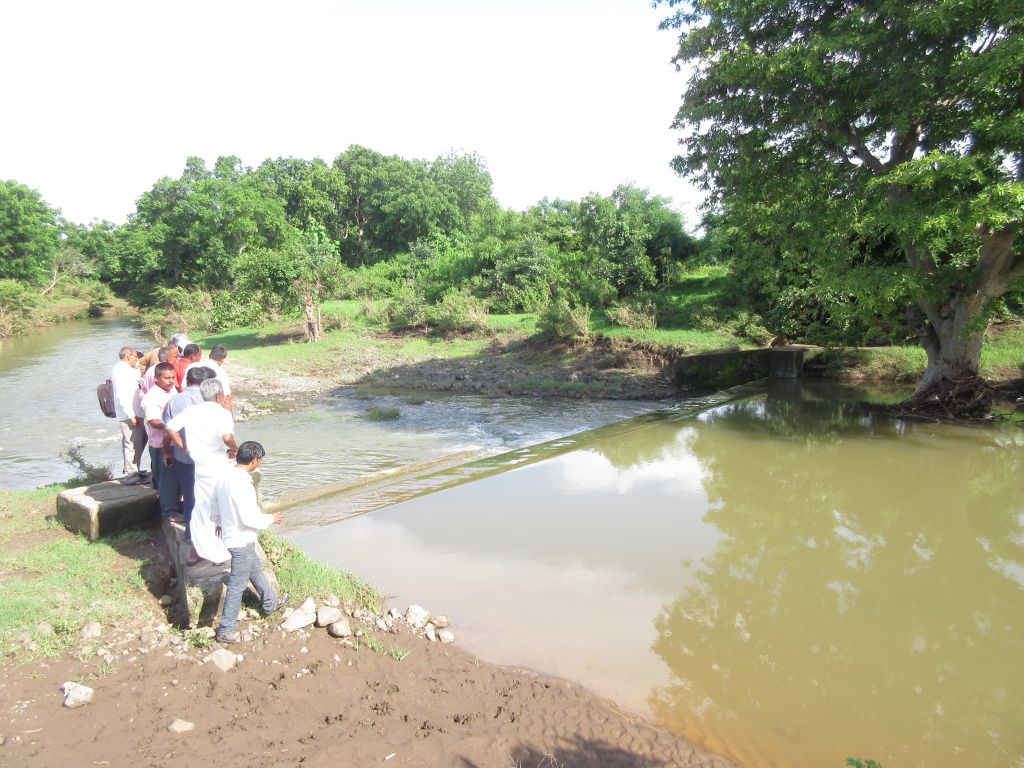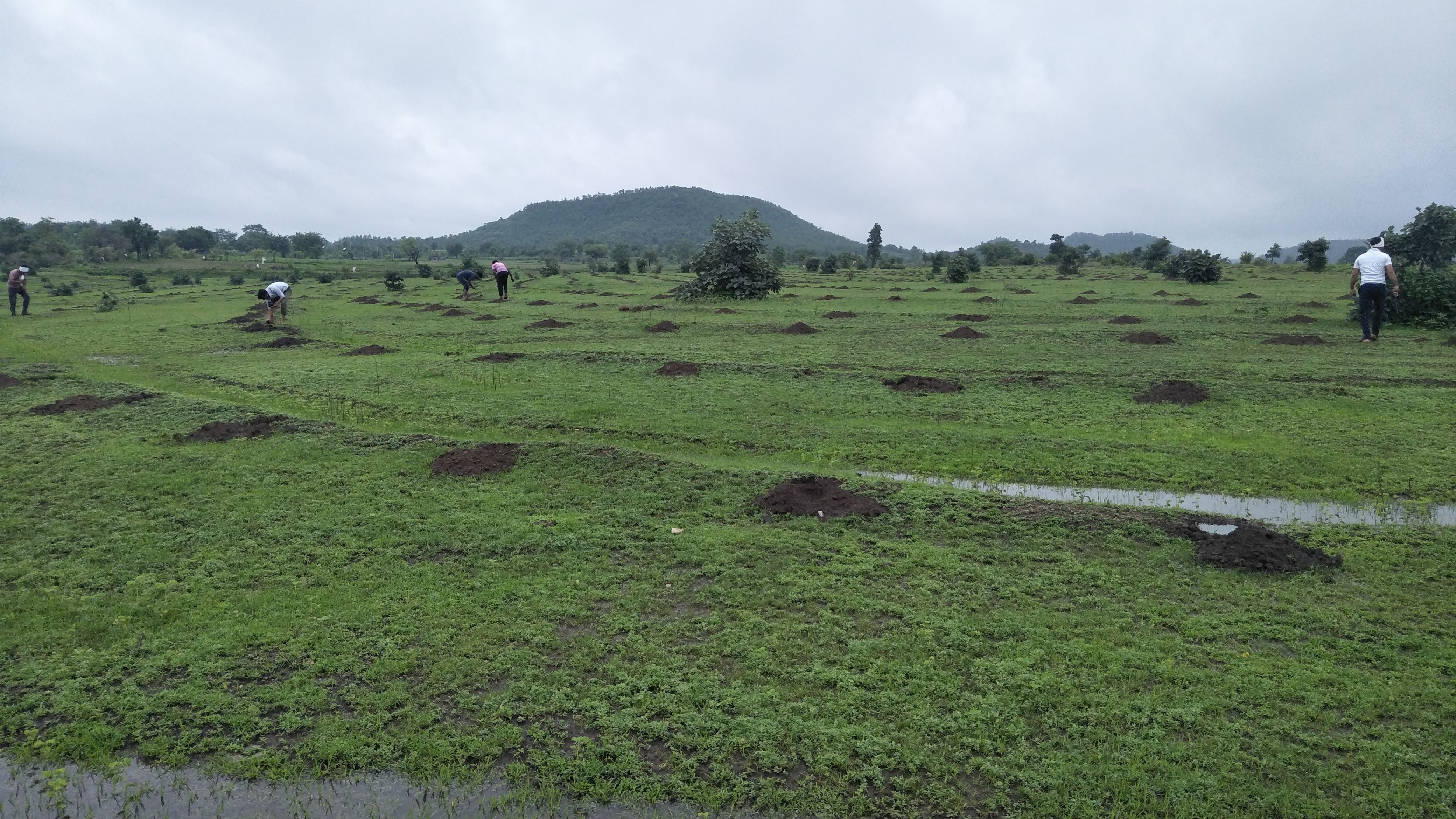Maharastra’s Yavatmal district in the Vidarbha region is home to several tribal communities. Largely rainfed, monocrops like cotton, soybean, wheat, and turmeric, among others, are grown in a majority of the region. However, reduced rainfall, water shortage and soil infertility plague the region, causing crop failures and resulting in severe agrarian distress.
The 80 km long Waghadi river flows through the district’s Ghatanji and Yavatmal blocks. One of the six tributaries of the Painganga, the Waghadi was once considered the area's lifeline. Changes in land-use and degradation along the river’s catchment areas have decreased its water supply and duration of flow, turning it into a non-perennial river.
In 2013, through feasibility studies conducted in the Ghatanji block, FES identified the extent to which the conditions and distribution of natural resources had been disturbed in the area. Continuous degradation had destroyed soil fertility, especially in the river’s catchment areas.
The district’s annual average rainfall of 1,050 mm, received mostly during the north-east monsoons, has been reducing over the years. This reduction, coupled with the Waghadi’s decreased flow, had exacerbated the villagers' water woes, more so during the summer months.
The studies also highlighted the impact of monocropping practices adopted in the region. Deployed for commercial purposes, these practices, combined with the increased use of chemical fertilizers and pesticides, have depleted the soil of its nutrients, weakening it further. Forest degradation had also impacted the tribal communities who largely depended on forest produce for their livelihoods.
After gathering adequate information of the ground realities in Ghatanji, the FES team’s immediate focus was to improve the governance of the common water sources in the block. They decided to undertake the rejuvenation of the Waghadi River that had gone dry.

Through the feasibility studies, the FES team learnt that, previously, the river had a base flow even during summers. However, since soil and moisture conservation measures along the catchment area were not prioritised, most of the rainwater was lost to run-off, reducing the river’s flow substantially over time; eventually, the river dried up during the summer months.
In addition to reviving Waghadi’s water flow, FES’ efforts were aimed at providing the river an identity, which was crucial to its revival. The team also strongly believed that the Waghadi’s rejuvenation was possible only through collective action.
Thus, in 2014, FES facilitated the formation of Waghadi Bachao Abhiyan, a Multi-Actor Platform (MAP) including stakeholders from the state government to rural communities, to raise awareness and support the revival of the river and improve governance of common water resources in the region.
The block-level forum brought together representatives from the government, Panchayati Raj Institution (PRI) members, civil society organizations, community leaders, representatives of various peoples’ groups such as farmers, teachers, advocates, and the community at large.
Organized every 2 months, the MAP meeting provided these stakeholders with an opportunity to understand the proposed work and its intended benefits. In addition to empowering the communities with information and the necessary capacity building, the team also met with relevant state ministers, the Member of Legislative Assembly (MLA), and bureaucrats to propose and underscore the need to revive the Waghadi river.
This continued engagement with different stakeholders gave the Waghadi revival proposal the much required political and bureaucratic support. FES, either directly or through Partner NGOs, was already involved in leveraging the Mahatma Gandhi National Rural Employment Guarantee Scheme (MGNREGS) and Maharashtra State Rural Livelihoods Mission (MSRLM) across all 71 Gram Panchayats of Ghatanji. In addition to their existing work, FES’ outreach efforts enabled all stakeholders to join hands and work together towards restoring the river’s catchments and drainage lines.

Leading the efforts in Ghatanji, FES encouraged other organizations to similarly drive rejuvenation efforts in their respective project areas across the block. Some of the organizations involved in these efforts included Dilasa, Vikash Ganga Samaj Seva Santha, Rasikashray, Isha Foundation, and Pani Foundation.
Apart from sharing relevant tools like the Composite Landscape Assessment and Restoration Tool (CLART) and Crop Water Budgeting (CWB) tool, FES also extended appropriate guidance and on-field support to the organizations when required, ensuring that the demand and supply constraints on the water were addressed appropriately.
While the FES team ensured outreach efforts in 105 villages across the 71 Gram Panchayats, they directly worked with 20 villages across 12 panchayats, located upstream along the river. So far, a total of 21,000+ acres of land, including common and farmlands, have been covered through FES’ direct efforts. Further, planting of 1.5 lakh saplings was undertaken across these 20 villages, covering 700+ acres of commons, along with the renovation and de-siltation of water harvesting structures.

At the block level, the combined efforts of FES and Partner NGOs has led to an increase in the water harvesting potential in the area, benefitting 600+ farmers, with over 2,000+ acres of farmlands being brought under irrigation. The soil and moisture conservation efforts on the common lands have also improved fodder and fuelwood availability in the area. The efforts also helped provide employment to the communities with 54,000+ person-days being generated through MGNREGS.
“The efforts around Waghadi’s revival have made us more aware of our duty to protect and conserve the commons in a sustainable manner. The efforts, especially the MGNREGS activities, are not only helping restore our commons but also enhancing our livelihood opportunities. We also realized the impact of community work and its transparency when compared to individual work,” says Anil Pohankar, Mahatma Gandhi NREGS daily wage worker, Jarur village, Jarur Gram Panchayat.
Following this experience, in 2019, FES signed 4 Memoranda of Understanding (MoUs) with the Government of Maharashtra. These MoUs focus on expanding work on river rejuvenation, Community Forest Rights, Gram Panchayat Development Plans (GPDPs), and improving MSRLM implementation across the Vidharbha region.
FES’s efforts along the Waghadi river helped them receive the State government’s permission to implement similar activities towards the revival of the Khuni river, under the river rejuvenation MoU. Leading the implementation, FES is now working with different stakeholders through convergence, similar to their efforts along the Waghadi, to rejuvenate the Khuni river.
Edited by: Kiran Singh and Sahana Srinath (FES)














